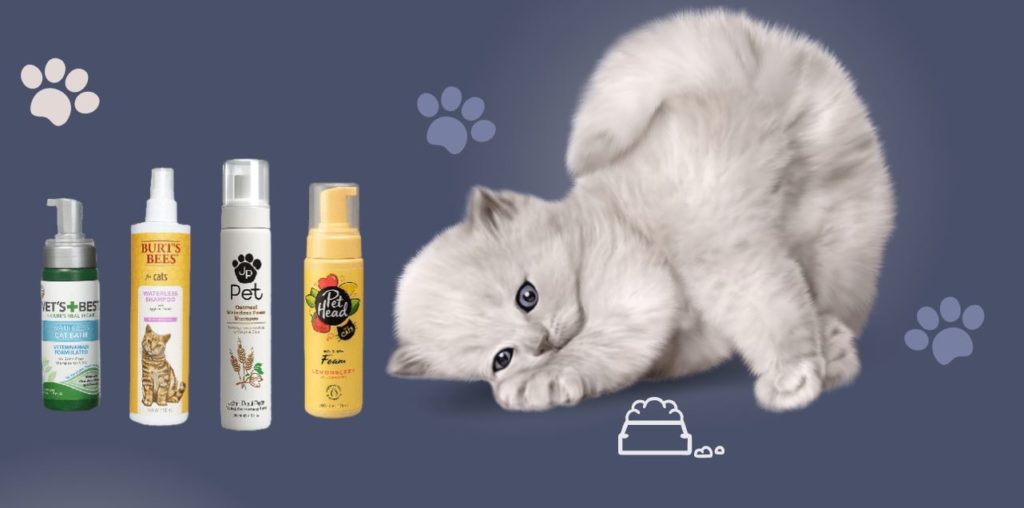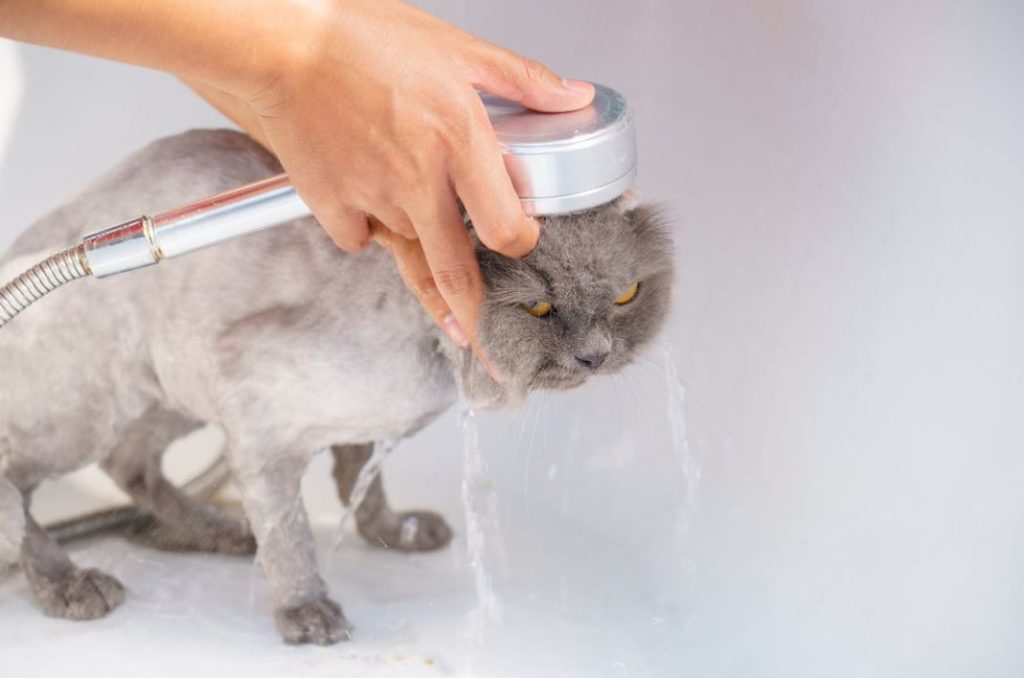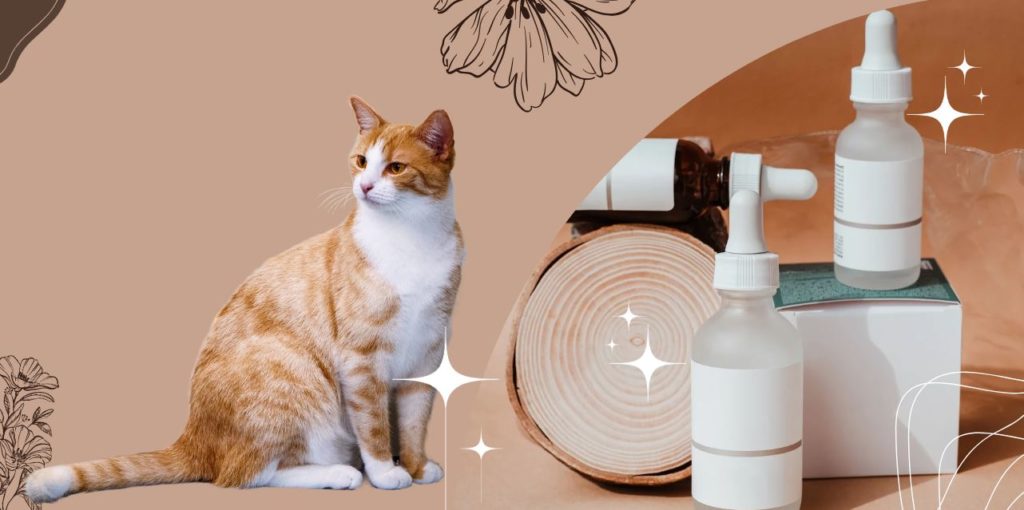Choosing the right shampoo for your cat is crucial to maintaining its cleanliness and overall health. In this regard, it’s essential to know how to choose the right cat shampoo that caters to your pet’s specific needs. As a devoted cat owner, you want to ensure that your feline friend is clean and well-groomed, and the type of shampoo you select can significantly affect their coats, skin, and overall well-being.
Let’s explore the world of cat shampoos, helping you find the perfect match for your beloved pet. We’ll discuss the Importance of using the right shampoo, the available types, and how to safely and effectively bathe your cat.
Factors to Consider how to choose the right cat shampoo
Selecting the right shampoo for your cat is not just about making them smell good; it’s about their health and comfort. The wrong shampoo can lead to skin irritation, dryness, and discomfort for your cat. To make an informed decision on how to choose the right cat shampoo, let’s explore the essential factors to consider.
1. Understanding Your Cat’s Coat Type

Cats come in various breeds, each with its unique coat type. Understanding your cat’s coat is crucial when choosing the right shampoo. Here are some typical coat types and the best shampoos for each:
Short-Haired Cats:
If you have a cat with short fur, it’s important to choose a shampoo that is mild, moisturizing, and gentle on their skin.
Look for shampoos labeled “gentle” or “hypoallergenic,” as these formulations are designed to be soothing and non-irritating. Avoid shampoos that contain harsh chemicals, detergents, or chlorine.
Examples of shampoos that are suitable for short-haired cats:
- Kotomoda Probiotic Shampoo for Shorthair Cats
- OPAWZ C2-Bouncy Shampoo for Short-Haired Cat
- Mooncat Waterless Cat Shampoo
- Burt’s Bees Hypoallergenic Cat Shampoo
Long-Haired Cats:
Long-haired cats require shampoos that cleanse their fur and help detangle and condition it. Anti-tangle and moisturizing shampoos are ideal for keeping your feline friend’s coat healthy and shiny.
These shampoos help remove tangles and mats from the fur while providing essential moisture to prevent breakage and promote a soft and silky texture.
Additionally, they help keep your cat’s skin healthy and hydrated, which is essential for preventing irritation and other skin issues.
Some examples of shampoos that are suitable for long-haired cats:
- HYPONIC Hypoallergenic Premium Shampoo
- Burt’s Bees Cat Shampoo
- Bobbi Panter Pet Products Shaggy Cat Signature Shampoo & Conditioner
Specially Formulated Shampoos:
Specially formulated cat shampoos are designed to meet the unique needs of cats, taking into account factors such as their skin sensitivity, coat type, and specific health conditions. These shampoos are created with safe ingredients for cats and are often pH-balanced to be gentle on their skin.
For example, an antifungal cat shampoo might be recommended if a cat suffers from skin infections like dermatitis.
Cat dandruff shampoo can help moisturize and heal dry skin with ingredients like oatmeal and aloe vera.
2. Checking for Allergies and Sensitivities
Just like humans, cats can have allergies or sensitivities to specific ingredients. To make sure your cat doesn’t have an adverse reaction to the shampoo while learning how to choose the right cat shampoo, it’s advisable to perform a patch test.
Apply a small quantity of shampoo to a small area on your cat’s skin, and closely observe for any signs of irritation or discomfort. If you observe any adverse reactions, cease use immediately.
Different Types of Cat Shampoos

Now that we understand the Importance of selecting the right shampoo for your cat let’s explore the different types of cat shampoos available in the market.
Regular Cat Shampoo
Regular cat shampoos are formulated for general use. They suit cats with healthy skin and fur, making them ideal for routine baths. Look for options with mild, non-irritating ingredients.
Medicated Cat Shampoo
Medicated cat shampoos address specific skin issues like allergies, infections, or dermatitis. These shampoos usually contain active ingredients to help alleviate these conditions. Always consult your veterinarian before using medicated shampoo on your cat to ensure you’re treating the proper condition.
Waterless Cat Shampoo
Waterless cat shampoos are a convenient option for cats as opposed to water. They come in spray or foam forms and can be applied directly to your cat’s coat and massaged. They are a handy choice for spot cleaning between regular baths.
Kitten-Specific Shampoo
Kittens have delicate skin and require a gentle, mild, specially formulated shampoo. Look for shampoos that are explicitly labeled for kittens, ensuring that it’s safe for their young, sensitive skin.
How to Safely Bathe Your Cat

Now that you know how to choose the right shampoo for your cat, it’s essential to understand the proper way to bathe your feline friend. Cats are notorious for disliking water, so that bathing can be challenging. Here are some tips for a stress-free cat bath:
Gather Your Supplies
Before you start, ensure you have everything you need within arm’s reach. This includes the chosen shampoo, a large, shallow container (like a sink or tub), a cup or sprayer for rinsing, towels, and treats.
Prep Your Cat
Ensure your cat is calm and comfortable before the bath. Brush their fur to remove tangles or mats, and trim their nails if necessary. It’s also a good idea to place a non-slip mat in the sink or tub to prevent slipping.
Use Lukewarm Water
Cats are sensitive to temperature, so use lukewarm water for their bath. Make sure the water is neither too hot nor too cold. Fill the container with a few inches of water.
Apply Shampoo Carefully
Wet your cat’s fur, then apply the shampoo according to the instructions on the bottle. Be gentle and avoid getting shampoo in their eyes, ears, or mouth. Use your free hand to soothe and reassure your cat.
Rinse Thoroughly
Rinse your cat’s fur thoroughly, making sure no shampoo residue remains. Cats are prone to skin irritations, so proper rinsing is crucial.
Dry and Reward
After the bath, gently pat your cat dry with a towel. Provide plenty of treats and praise to create a positive association with the bath.
Frequently Asked Questions(FAQs)
Common skin conditions in cats include: dry, flaky skin, hair loss, infections, allergies, and skin irritations.
It’s generally not recommended, and this is because human oilier than animal skin, and our shampoos are designed to remove oils.
Cats, however, need less oil removal since they have fur to protect their skin.
Moreover, human shampoos have a more acidic pH, which can irritate a cat’s skin, which tends towards a more neutral pH.
With continued use, human shampoo can alter your cat’s pH balance, making their skin prone to drying and flaking.
According to many veterinarians, using baby shampoo on cats is possible, but it should only be done in rare cases when cat shampoo is unavailable.
Conclusion
Choosing the right shampoo for your cat is significant in maintaining their overall health and happiness. By understanding your cat’s specific needs and following proper bathing techniques, you can ensure that your cat enjoys a clean and comfortable coat.
Remember that your cat’s well-being should always be a top priority. If you need clarification on the right shampoo or your cat’s grooming needs, consult your veterinarian for personalized guidance.
References:
- Common Skin Problems in Cats | https://www.aspcapetinsurance.com/resources/common-skin-problems-in-cats/
- Common Cat Skin Conditions | https://www.petmd.com/cat/conditions/skin/common-cat-skin-conditions
- Can You Use Human Shampoo on Cats? Your Question Answered | https://www.veterinarians.org/can-you-use-human-shampoo-on-cats/
With a passion for cats and years of experience in cat care and grooming, I have gained valuable insights and expertise that I want to share with other cat lovers. I believe that every cat deserves the best care possible, and through this platform, I aim to empower cat owners like you to provide the utmost love and care for your feline companions.



